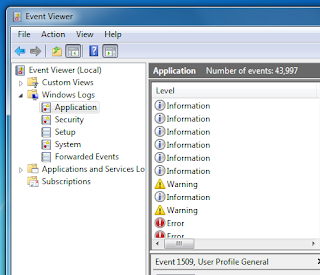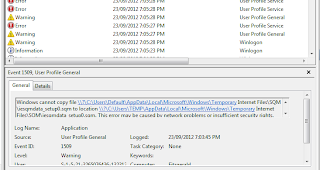My plan for this blog is to be mostly about my app development work - building, testing, designing, using toolkits and frameworks and so on. I have one app under development and ideas for more. This post gives the background of my current app.
In the beginning - conception, ambition, scaling back, release
Late 2010, when the SDK for Windows Phone had been released and I was all excited about building an app, I realised that I should build an app for PAX. I began, but didn't get anything done in time for PAX of that year. Then I bought tickets to PAX East 2011, and decided that I would have an app out for that. I looked into MVVM programming, and got pretty much my first taste of actually using an MVC pattern (big props to
Laurent Bugnion's toolkit). I was practicing all my (underdeveloped) project management skills, creating user stories, sketching out the interface, etc. Shockingly, I didn't give much thought to testing it (pretty egregious oversight, given that I'm an SDET).

Unsurprisingly, my first ideas were ridiculously ambitious - it should interface with twitter, allowing you to follow all the pax-related accounts, and to tweet, and it would automatically append a #pax tag to any tweets you sent, and you should be able to view the map and zoom in from a suburb level right to a room level, and make notes on the map and share them with your friends in realtime. I handwrote the events into a custom, simple-as-possible xml format, then saved this schedule into the app itself (easy at the time, but meant that a full update was required for any schedule changes). As the dates got closer, I started cutting features. I actually got the app through certification about a week before PAX began, and then had to create an update with the full schedule that made it to the app store the day of PAX East 2011. I was unbelievably proud, and seeing the (mostly positive) reviews and getting a few emails from users was an amazing feeling.
version 2 - poor design bites back
I planned to improve it for PAX Prime, August, but in the end didn't really make any changes - my clunky overall design meant that simply updating all the content to be relevant for Prime was an effort. At PAX Prime I had some new users, but still a few bugs. In particular, some users complained it was crashing frequently, which I couldn't repro. Eventually one of the users figured out that if he switched his region format from Canada to the USA, it stopped crashing - I thought I'd covered all my bases by randomly testing in region formats like french, two cyrillic languages and an asian language, but no. Immediately after PAX I was still motivated enough to do some work, and I fixed this bug as well as implementing a search feature among all the events.
doing it all right this time, for real
Coming up now we have PAX East 2012. I am in the process of redesigning the app under a test driven framework, so that I can add some major new features like exporting your scheduled events to your calendar, sharing them with friends on an associated website, and updating the event list from a website rather than releasing a new version of the app each time the schedule changes. I created
a Trello board to track what I'm doing - I have mostly been pretty consistent at keeping all my notes and sketches on my ipad (I use NoteTaker HD), but a dedicated task tracker seems like it'll make life easier. I decided that it would be useful to get more feedback from users (related: I'm taking a User Centred Design Certificate) so I wrote a survey, piloted it on three friends who used the app, and then published (well, submitted for certification, so far) an update that adds a link to this survey in the about page and a notice the first time the user opens it asking them to go take the survey. I also have some feedback in email already from users who contacted me through my about page.
Next few posts will probably cover
- how I'm building the test framework for my app, and problems I've run into where my design isn't test friendly
- installing and beginning to work with the Skydrive API
- setting up the website for the schedule to update from


